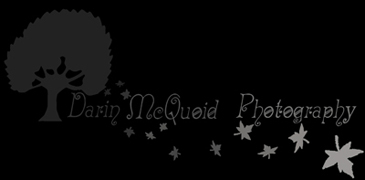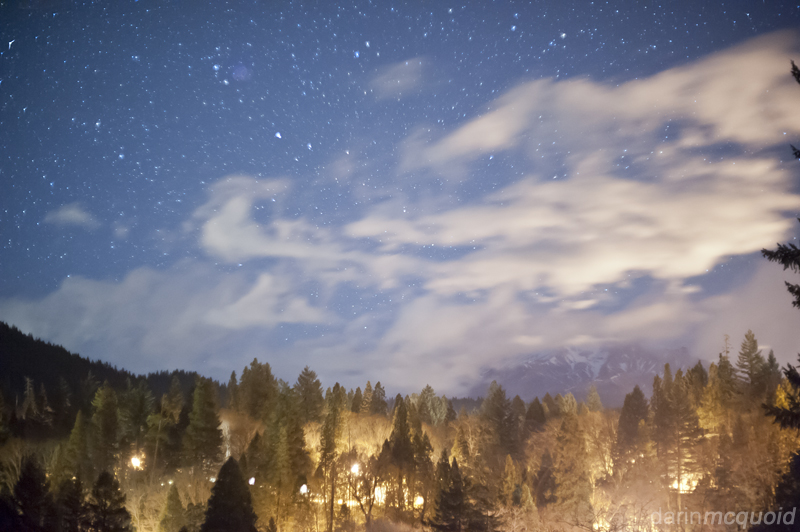
| Darin McQuoid | Blog | Reviews | Tutorials | River Directory |
Samyang
14mm F/2.8 IF ED UMC

Samyang F/2.8 IF ED UMC
Weight: 19.4oz
Filter Size: n/a
For a short time, before full frame dSLRs and DX
format
ultra wide lenses, 14mm lenses were the holy grail for getting anything
wide on an APS-C sized sensor. They had a history of being
expensive, with Nikon's offering coming in at $1,900 and
Canon's
tipping the $2,000 scale. Sigma was the "cheap" option around $1,000.
But things have changed. 10-20mm DX zooms have been around a while and
see too much use for my taste. I'm not a ultra-wide angle fan
for
kayaking, although they can have their moments. And there is a cheap
14mm f/2.8.
By now you're probably wondering why I own a 14mm lens for a full frame camera. It's not for kayaking. I bought the Samyang 14mm f/2.8 for taking pictures of stars. I love stars and the milky way. Unfortunately Nikon's lens lineup has a long history of coma when used wide open. Coma is a lens defect which results in points of light appearing in the image not as points but as discs with comet-like tails. This generally happens corners of the frame.

Nikon D700, Nikkor 58mm f1.4 @ 10" f/1.4 ISO 6400
Slight coma in the corner, but not distracting.

Nikon D700, Samyang 14mm f/2.8 @ 20" f/2.8 ISO 6400

The diameter difference from front to back is significant.


Samyang F/2.8 IF ED UMC
Weight: 19.4oz
Filter Size: n/a
By now you're probably wondering why I own a 14mm lens for a full frame camera. It's not for kayaking. I bought the Samyang 14mm f/2.8 for taking pictures of stars. I love stars and the milky way. Unfortunately Nikon's lens lineup has a long history of coma when used wide open. Coma is a lens defect which results in points of light appearing in the image not as points but as discs with comet-like tails. This generally happens corners of the frame.
Here is an extreme
example of coma.
Note the massive bit of it in the top left.

Nikon D700, Nikkor 58mm f1.4 @ 10" f/1.4 ISO 6400
Wider
is better when
shooting stars, and after doing a lot of research I found that all fast
ultra wide lenses, even Nikons newest $2,000 14-24mm
f/2.8, have coma wide open. Then I wandered upon the Samyang
14mm
f/2.8. Samyang, Rokinon, Vivitar, Bower, the lens goes under many names
but is made by the new Korean lens maker Samyang. It's an oddity in the
modern age, a manual focus lens with quality optics at a very moderate
price of $380. On top of the price, the lens far and away has the least
coma of any 14mm I've found. Hardly any, even wide open. It's also
quite sharp wide open. It does have ED glass, and like ED Nikkors, it
focuses past infinity which is a bit of a shame for night work.
Slight coma in the corner, but not distracting.

Nikon D700, Samyang 14mm f/2.8 @ 20" f/2.8 ISO 6400
The construction of the lens is good, a mix of metal and
plastic
falling somewhere between Nikon's new all plastic lenses and their
venerable AI-S lenses.

The front element is massive and can't take filters, which is a shame. The lens hood protects it well and stays in place.
Samyang 14mm f/2.8 vs the
70-300VR

The front element is massive and can't take filters, which is a shame. The lens hood protects it well and stays in place.

The diameter difference from front to back is significant.

It
is a manual focus
only lens. I don't find this to be an issue at all, because the wider
the lens, the more the depth of field. With 14mm on a full frame camera
the depth of field is significant, if you are shooting it during
daylight hours nearly everything will be in focus. I don't bring it on
the river unless I have a specific wide angle shot in mind. Remember
that with a lens this wide you need to be within a few feet of your
subject. I can't say enough good things about it for shooting images
with stars. The only thing that would make it better is a faster
aperture and the ability to use filters.

Nikon D700, Samyang 14mm f/2.8 @ 20" f/2.8 ISO 6400
Build: 8/10 - Nice plastic and metal mix. Feels solid. The exposed front element is somewhat protected by the built in lens hood.
Handling: 8/10 - Not much to handle, the AF ring has a good feel, better than a modern AF lens but not classic Nikkor manual focus smooth either.
Performance: 9/10 - For what I use it for, it's amazing. It does have a lot of distortion, but I don't shoot buildings with it..
Value: 10/10 - Far and away the best value for a ultra wide angle lens on a full frame camera.
Overall: 9/10 - For the price, the optical and build quality is staggering.
Other links:
Photozone review of the previous version

Nikon D700, Samyang 14mm f/2.8 @ 20" f/2.8 ISO 6400
Build: 8/10 - Nice plastic and metal mix. Feels solid. The exposed front element is somewhat protected by the built in lens hood.
Handling: 8/10 - Not much to handle, the AF ring has a good feel, better than a modern AF lens but not classic Nikkor manual focus smooth either.
Performance: 9/10 - For what I use it for, it's amazing. It does have a lot of distortion, but I don't shoot buildings with it..
Value: 10/10 - Far and away the best value for a ultra wide angle lens on a full frame camera.
Overall: 9/10 - For the price, the optical and build quality is staggering.
Practicality
for kayaking: 5/10 - it's just not something
you're going
to use on the river a whole lot, and is kind of large and heavy too,
compared to the Nikkor 20mm 2.8
It's worth noting that for some reason, only the Nikon version is the newest with less distortion and UMC coatings. If you're going to use it on a Canon camera I'd just get a Canon to Nikon adapter off ebay and buy the better (and more expensive) Nikon mount UMC version of the lens.
It's worth noting that for some reason, only the Nikon version is the newest with less distortion and UMC coatings. If you're going to use it on a Canon camera I'd just get a Canon to Nikon adapter off ebay and buy the better (and more expensive) Nikon mount UMC version of the lens.
Other links:
Photozone review of the previous version
LensTip
Review
Daniel Brasuell, Mill Creek California. I often find myself cropping kayaking images from the 14mm into a 4/5 ratio.

Nikon D700, Samyang 14mm f/2.8 @ 1/1000 f/5.6 ISO 200
If you know South Silver you'll realize I am only a few feet away from Rok Sribar

Nikon D700, Samyang 14mm f/2.8 @ 1/1000 f/8 ISO 200
Daniel Brasuell, Mill Creek California. I often find myself cropping kayaking images from the 14mm into a 4/5 ratio.

Nikon D700, Samyang 14mm f/2.8 @ 1/1000 f/5.6 ISO 200
If you know South Silver you'll realize I am only a few feet away from Rok Sribar

Nikon D700, Samyang 14mm f/2.8 @ 1/1000 f/8 ISO 200